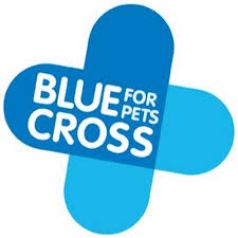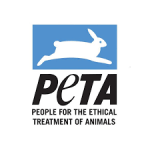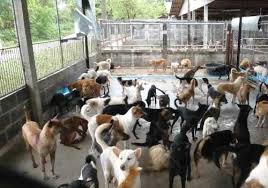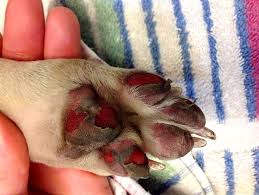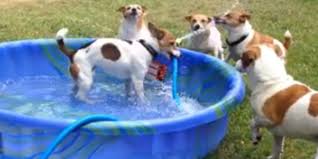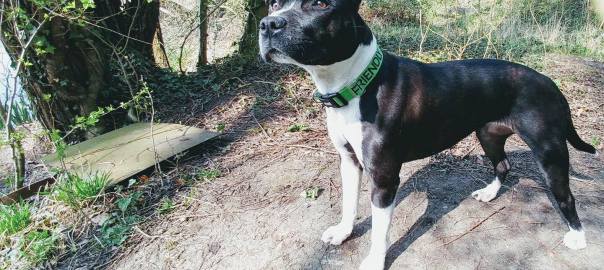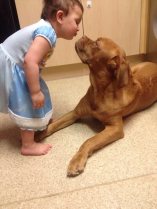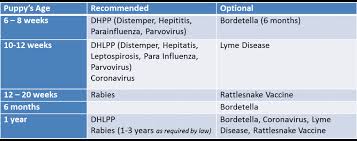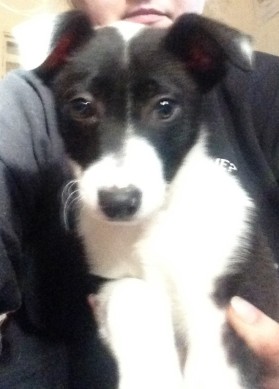I grew up watching Pet Rescue and dreaming of growing up to be an RSPCA officer, driving around answering calls to rescue and save neglected, abused and abandoned dogs all across the UK. I sponsored a dog for The Dog’s Trust for 5 years and I signed and shared every PETA issue i came across as well as using the PDSA charity shops and buying the Battersea Dogs and Cats home Christmas cards and books. These organisations were my hero’s and i thought they were the angels for animals. Having now been running a small rescue for 3 years slap bang in the middle of the UK, I have been enlightened.
I wondered how it was possible for all these phone calls, emails, social media tags and poundie requests that were flooding in, to be asking for my help when i was nothing but a small group of experienced volunteers and our own homes. The shocking moment i first heard the words: “and the RSPCA won’t help” or “The Dog’s Trust won’t take him/her” i was confused and actually didn’t believe these people had approached the organisations. Until i began getting the same phone calls from other rescues seeking support or veterinary centres with animals dumped on them.
So what is going on out here in the secret underworld of rescue? It appears to have turned into a corporate and political trolling nightmare with the root ethos of helping dogs in need being completely forgotten by the larger organisations that are receiving the majority of the public’s monetary support and have access to the best resources and facilities.
The RSPCA
In 2012 former RSPCA employee’s; inspector (2008-2010) Dawn Aubrey-Ward, vet of 12 years David Smith and manager (1990 – 2000) Egan Ravenscroft, gave the newspapers an expose on the organisation claiming that inspectors themselves were reluctant to take animals back to headquarters in fear the charity would deem their needs too costly or time consuming and euthanise the animal. The charity has lost it’s original cause and is no longer helping vulnerable people and their pets choosing instead to focus their efforts on prosecutions of animal cruelty cases as well as political and legislative changes.

In 2013 they received around £105.4 million, in 2016 the RSPCA received a whopping £143.5 million in donations and legacies and spent £123 million, with £77.5 million on animal care and inspectors, £2.9 million going on campaigns and promotions, and £8.2 million on prosecutions. They “collected” (notice the use of this word oppose to “rescue”) 8,009 dogs in this financial year, but in 2015 it was discovered that they actually put to sleep 46% of all animals they take in and admitted 3,400 had been euthanised wrongly due to a lack of shelter space. They claim those euthanised under “behavioral issues” were never going to be adopted and had little to no quality of life in kennels. Perhaps the RSPCA should consider putting more effort into their training, handlers and care policies and procedures to actually rehabilitate these dogs they have collected up?
They rehomed 10,000 less animals than the year before yet had an increase of 20% in prosecution cases. Surely with all these donations and over £20 million left over in the bank, the RSPCA can more than afford to build and maintain an extra centre or 2 to create space for these dogs? Well they pledged to join the ‘No Kill’ movement by the end of 2017 and never unnecessarily put down an animal again due to spacial or minor behavioural issues so lets hope that is their plan with all that spare cash.

Now I think we all know that sadly animal cruelty is on a disturbing rise in the UK and this could account for the significant increase in the RSPCA prosecution figures, this alongside the fact that they are the sole authority for seizing and prosecuting cruelty cases, as the local police and councils are both simultaneously too busy and not interested. In 2016, pro hunt and mass production farming MP’s attempted to strip the RSPCA of their power of authority to prosecute cruelty cases, most probably with the intentions to protect their own interests. Whilst the RSPCA might not be perfect, i think we can all agree that it is a dog-send the MP’s did not win that battle.
On the flip side though, another story released in 2012 told of how the late Mr David Brown left his cottage and small adjacent nature reserve to the RSPCA with the “wish” for them to maintain it for the foxes, badgers, hedgehogs and squirrels living there whom he used to keep safe and feed by hand. The RSPCA chose to instead go through a legal loop hole where Mr Brown had not made it a ‘legal condition’, so they sold it to developers The Emerson Group who promptly bulldozed the area killing the animals, destroying their habitat and 6 trees including 2 large oak trees. The RSPCA made £295,000 from this sordid deal.
If you google ‘RSPCA Scandal’ you will be overwhelmed by stories of elderly or vulnerable adults having their animals removed for minor misdemeanours or simple lack of education and knowledge. The UK’s favourite animal charity with its expensive TV adverts and Channel 5’s show The Dog Rescuers is trying to maintain it’s loved reputation but as more stories and statistics come to light, it will have an uphill struggle.
The Blue Cross & Battersea Dogs and Cats Home
The Blue Cross is another interesting contender amongst the Big Dog’s of rescue, with 7,500 dogs rescued in 2014 and 525 of them were put to sleep. The Blue Cross works with local councils to take in strays and have an obligation to make space as other council contracted kennels do. Battersea Dogs (and Cats Home) took in 5000 dogs and put to sleep over 1200 of them, that is a 34% euthanasia rate, a third of the dogs they have come in killed due to a lack of space for their council contracted strays as well as the dogs they deem unadoptable due to “behavioural and temperamental” issues.
Battersea Dogs Home had an income in 2016 of £36,716,707 and had total funds of £72,828,752 as well as celebrity endorsement and the ITV show Paul O’Grady’s For the Love of Dog’s.
Birmingham Dog’s Home
Our local big dog, Birmingham Dog’ Home (BHD), recently took a hard hit after it was discovered to have around £1 million of legacies embezzled by its financial director Simon and his partner, Adele. The scandal shook the nation and certainly the rescue world as for a few months the donations certainly dried up as their was a huge drought of trust.
However, this is not my biggest issue with this particular big dog… BHD does not neuter any of it’s dogs, it also has a high euthanasia rate deeming dogs unadoptable with little effort to change that. They also strictly keep to a policy of only taking in strays when they can to increase their revenue from council contracts. I myself have had to take a dog there (once and never again!) when Broken Souls Rescue was full, the RSPCA had refused to get involved in removing a dog from a house where the owner had been taken into hospital terminally ill. BDH wrote down on the intake slip that the dog was a stray and then when it was later discovered by senior staff he wasn’t i received a rude phone call. I later found out the dog in question was put to sleep for “behavioural reasons”.
PETA
‘People for the Ethical Treatment of Animals’ or PETA as they are ‘affectionately’ known, are the baddest of the big bad wolves. With some of the most graphic advertising campagin’s, known for using pictures out of context and violent, forceful protests that usually endanger the animals they are supposedly trying to protect. They receive over $33 million per year in donations to fund their extremist and usually criminal activist’s. They actually strategically employ people who fail or score lowest on animal warden and inspector tests to work in their “shelters” to ensure no conflict from staff over their actions.
Most animals are euthanised within 24 hours of entering a PETA institution with more money going towards running the freezers for storing the deceased bodies than on animal care and welfare. They rehome just 1% of animals they “rescue”, putting to sleep 99% with no adoption open hours or promotions. Their facilities do not even meet national minimum standards for animal housing facilities with cramped cages, lack of bedding, no staff on weekends or bank holidays (meaning no food or water) and animals suffering of horrific diseases or injuries are left to die slowly and alone on a hard cage floor. In 2015 alone they are known to have killed at least 29, 426 cats and dogs.
The Dog’s Trust
My preferential Big Dog of the pack, The Dog’s Trust has mostly fantastic policies and procedures when compared to the rest… They rehomed 13,067 dogs in 2016 and put to sleep 270 claiming they “…never put a healthy dog down”. In 2016 they received £98.4 million and spent £86.1 million and put the rest to good use of beginning the building a new centre and £46.1 million went direct to the dogs and their welfare which is over 50%. They also have a strict neutering policy, run free microchipping events, good dog citizenship training groups and education courses in schools for the next generation. They run the most wonderful dog fostering program for victims of domestic violence and offer pre-booked safety for your pet when you pass away. They gave us the phrase “a Dog is For Life Not Just For Christmas” …but when you have as much influence and resources as they do, being the best of the worst just isn’t good enough.
The Dog’s Trust have some minor customer service issues they need to iron out as I’ve had adopters come to Broken Souls complaining about having thought they’d reserved a dog only to turn up and discover it has already been adopted out! However, this really isn’t my complaint, i’m more bothered by their stance on puppy sales. In 2017, The Dogs Trust and the Blue Cross opposed a complete ban on third party puppy sales which would have enforced only licensed breeders to be selling puppies ensuring the welfare of breeding bitches and their pups. The Dog’s Trust and Blue Cross were quoted to have opposed the idea claiming it would push puppy farming further underground akin to that of drugs with the welfare of mum, dad and pups being at more severe risk. It is slightly questionable that the dogs trust were happy to take in 330 foreign puppies seized as illegal on UK borders and reap the benefits of the publicity and adoptions fees they generate.
My last complaint to the Dog’s Trust is their stance on intake of particular breeds. Whilst they claim to have no official limit or policy on in-taking certain breeds or quantities of some breeds, they do state that they: “do seek to ensure that our centres do not become full of any one particular breed”. We believe at Broken Souls Rescue that our resources should be foccused on the breeds in need, if that means we have 99% staffies in our kennels so be it. The country unfortunately follows fashions with it’s pet types like it does with anything else, one minute it’s all staffies, then lurchers, then husky and akita types…. The resources should be where they are needed, not dispersed to ensure an aesthetically pleasing kennel.
Summary
I’m almost certain some of these statistics and facts will have shocked you but the fact of the matter is the public is blind to what is really going and keeps throwing money at the wrong organisations whose original intentions have long been forgotten. CEO’s, directors and managerial wages as well as promotional financing is a waste of donations when the smaller, no-kill rescues across the country are scrambling to pay their veterinary and boarding bills.
The UK councils put down around 18 dogs every day. Last year 3463 healthy dogs were put down unclaimed with no rescue space offer. The council contracted kennels that take in strays often disguised as re-homing centres, only receive financial aid for the first 8 days, it is then the kennels responsibility to care for these dogs, or alternatively choose to put them to sleep. The Blue Cross and Battersea both have contracts with their local UK council’s and are obliged to make quick turn over of dogs or make space by which ever means necessary.
After dogs in need Broken Souls Rescue have had no space for have been turned away by ALL the above mentioned rescues, deemed as unadoptable due to their size, breed or training issues, i can no longer vouch for them with pure heart. I have no doubt all their hands on, genuine, animal-loving staff and inspectors go into the job with the same ideals and disillusionment i myself had not so long ago and i am not slating them personally. I have dealt with hoarding, neglect, abandonment and cruelty cases that the above Big Dogs have refused to even acknowledge. I have no kennels and an average of jut £17k income of donations and adoption fees per year. We put to sleep an average of 3 animals per year and rescue over 150.
Broken Souls Rescue is currently working towards building our own centre and growing from UnderDog to Leader of the Pack. To donate towards our funds for our own kennel premises please go to: http://www.paypal.me/brokensoulsrescue or transfer directly to Lloyds TSB Broken Souls Rescue Ac: 28807262 Sc: 30-92-33
Please Share and Comment.


